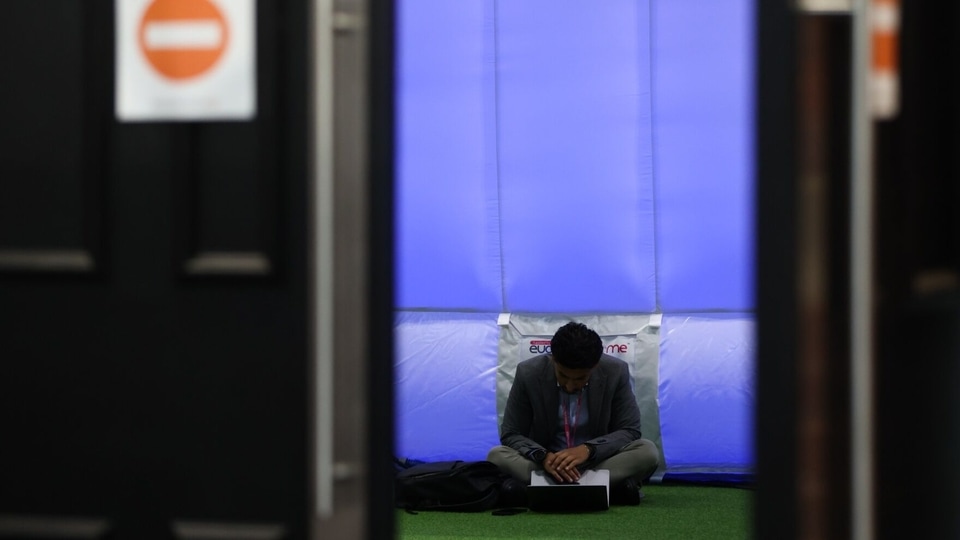Two Full-Time Jobs? That’s a Remote Work Myth
The notion that employees are juggling a second job on the sly speaks to bosses’ fears about managing out-of-sight workers.






 View all Images
View all ImagesThere is a bogeyman lurking behind corporate America's push to bring workers back to the office: the remote employee who is secretly working a second full-time job, not by working 80-hour weeks, but by toggling between Job 1 and Job 2.
Over the past two years, the Washington Post, Wall Street Journal, Wired, the BBC and many others have run exposes of these “overemployed” people. The details are always irresistibly juicy. One engineer told Vanity Fair that he earns $295,000 a year combined from two jobs, one of which requires about 15 hours a week, and a second that takes up “zero” time — he's not sure his bosses even remember he still works there. A marketer told Vice that he gets 80% of his work done with ChatGPT, freeing up enough time to add a second job.
The workers say the appeal of holding two full-time roles is entirely financial: Doing decent work at two jobs pays far better than excelling at one. They claim there's so much slack in the typical work day that they can easily pass as busy, committed workers.
These stories tap into broader fears among corporate bosses that the pandemic era has spawned an unsupervised swath of workers who use the cover of working from home to do the bare minimum. To most managers, “career polygamy” is even scarier than quiet quitting.
But bosses frightened of this workforce monster should know that it's nearly as mythical as the one that supposedly lives in Loch Ness.
When an employee isn't contributing, it should be obvious, whatever the reason. And if an organization's demands are so lax that workers can easily hold down a second full-time role, that probably says more about the employer than the employee.
Sure, some people do clandestinely juggle multiple remote jobs, as these anecdotes suggest, although they probably aren't as good at hiding it as they think. But it's probably far rarer than some sensational headlines suggest.
Indeed, much of the data supporting the ostensible trend doesn't hold up under scrutiny.
Oft-cited is a 2022 Resume Builder survey of 1,250 remote workers claiming that 69% of remote or hybrid employees were working multiple jobs (the press release says 79%, but I'm going off the charts). About 15% of remote workers have at least two full-time jobs. But the phrasing of the question is confusing: “In addition to your full-time job, how many other jobs are you employed to do (not including self-employed work)?”
Moreover, some of the listed side hustles don't exactly fit the stereotype of a coder trying to listen to two Zooms at once. More than 25% of respondents said their side hustles included gig work or retail; almost as many cited social media influencing (surely this counts as self-employed work?); and 15% mentioned sex work. This last item makes me deeply skeptical of the entire survey. Do we really believe sex work is this common? There are about 168 million civilian workers in the US. Although the murky legality of sex work makes it hard to measure, experts estimate that there are between 1 million and 2 million people doing it. That's just 0.6% – 1.2% of the workforce.
This isn't the only dubious survey to suggest a high number of workers with multiple full-time jobs. A 2023 Monster survey of 1,000 workers claimed 37% of workers — that's apparently all workers, not just remote workers — had more than one full-time job. This simply can't be true. Look around: Do you think a third of your colleagues really have a second full-time job?
Other data sources paint a far different picture of multiple job holders. According to the Bureau of Labor Statistics, only 4.4% of men and 5.2% of women have more than one job. Most of these individuals are juggling multiple part-time jobs, or a full-time job and a part-time gig; according to the St. Louis Fed's analysis of BLS data, less than 0.3% of US workers hold two full-time jobs.
And most of them aren't working remotely. They are combining morning shifts at Starbucks with a night job cleaning office buildings. A 2021 investigation of US census data found that most multiple job holders were clustered into a few low-paying industries, like retail, food services and waste management.
Nor are these multiple job holders raking in the money. In fact, they're not even earning as much as people with one job. Average total earnings of those with multiple jobs are about $54,000 a year. By contrast, average earnings of people with a single, stable job are about $63,000 a year.
While there are a few higher-earning workers who hold more than one job, these tend to be professionals such as doctors — who might have both a private practice and a job at a hospital. They're not feigning busyness, but working long hours. And they're not keeping their second job a secret.
Gleb Tsipursky, writing in Fortune, attributes the outsize attention to highly paid, two-timing remote workers to “a cognitive bias known as base rate neglect, where we focus on individual anecdotes and fail to assess the likelihood of statistical events.”
Put differently: Is it possible there is a centuries-old aquatic lizard living in a lake in Scotland? I suppose. But is it likely? Nae, laddie.
Sarah Green Carmichael is a Bloomberg Opinion columnist and editor. Previously, she was an executive editor at Harvard Business Review.
Catch all the Latest Tech News, Mobile News, Laptop News, Gaming news, Wearables News , How To News, also keep up with us on Whatsapp channel,Twitter, Facebook, Google News, and Instagram. For our latest videos, subscribe to our YouTube channel.

























